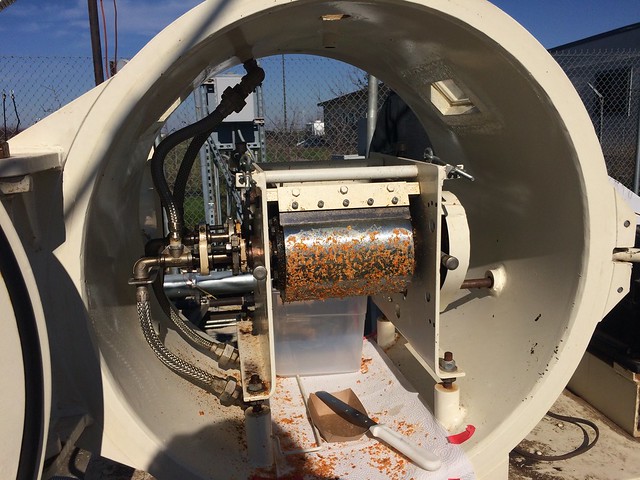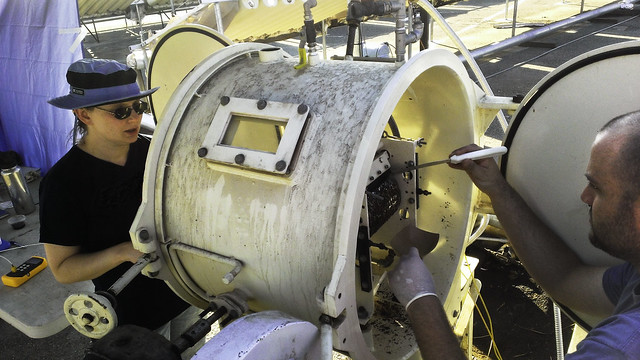
Pomace, the heavy puree left over after fruits and vegetables are juiced and processed, is used mostly as a feed additive for livestock. The rest of the wet puree is discarded in landfills.
Research by scientists with USDA and the University of California-Merced (UC Merced) showed that energy from heat derived entirely from the sun can be used to process pomace into a drier, lighter coproduct.
“Pomace is made up of fruit and vegetable skins, seeds and other fibrous parts, which contain a lot of nutrients,” says Rebecca Milczarek, a USDA-Agricultural Research Service engineer in Albany, California. “We’d like to see this coproduct used as an ingredient in human food.”
Consumer markets are available, but stabilizing pomace currently presents a big hurdle for processors, she says. Typically, wet pomace is only available a few months during the harvest season and molds if stored more than several days. In contrast, dehydrated pomace could be stored for use throughout the year. However, dehydration would require a lot of energy from heat—creating a demand for alternatives for better energy for heat, which currently comes mostly from natural gas.
To address this need, USDA and UC Merced scientists demonstrated that a solar thermal-powered drum dryer can process prune and tomato pomace into a dehydrated coproduct that’s easier to handle and store.
“We married solar thermal technology, developed by UC Merced scientists, with a food processing technology called drum drying,” Milczarek says. “Drum dryers typically work by pumping steam to heat a rotating steel drum. The heat usually comes from burning natural gas. However, the solar thermal-powered drum dryer generates all the needed heat from sunlight.”
The project, funded by the California Department of Food and Agriculture, demonstrated that the solar technology works efficiently with whatever sunlight is available, even on cloudy days, Milczarek says. Pomace is applied to the dryer, which heats and presses the pomace into a thin dehydrated layer. In addition, because all the heat needed for the drum dryer is supplied by the sun, the pomace can be dried and stabilized without generating carbon emissions.
Following this successful proof of concept, several California processing companies have expressed interest in trying solar technology on a larger scale, Milczarek notes.
“We’d like to see the coproduct used widely as a nutrition-boosting food ingredient,” Milczarek says. “There is already demand for this type of ingredient. For example, a product’s ingredient list may say ‘carrot fiber’; that use could be met by dried carrot pomace. So, there are markets for this; it’s just that stabilization is a big hurdle for processors to be able to get into those markets.”



